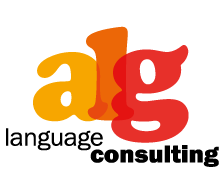Dubbing is a complex art that requires not only the ability to correctly translate a text, but also to adapt it so that it sounds natural and is consistent in the target language.
Adapting a translation for dubbing is a process that goes beyond simple language transposition; it requires an in-depth understanding of the cultural context, intonations and idiomatic expressions. In this article by ALG Language Consulting we look at the techniques and the challenges of translation with adaptation for dubbing and why it is important.
The importance of adaptation in translation for dubbing
Adapting texts prior to dubbing is essential for various reasons, ranging from language consistency to usability of the content by the public. Adaptation should not be confused with the concept of translation; here are some key points.
Cultural and linguistic accuracy
One of the most critical aspects of adaptation for dubbing is cultural accuracy. A literal translation may not have the same emotional impact or may not be comprehensible in the cultural context of the language of the target country.
For example, jokes and puns often require complete reinterpretation of the dialogues to maintain the original humour and produce the same effect.
Lip synchronization
Lip synchronization, or lip-sync, is essential to guarantee that the words pronounced by the characters coincide perfectly with the lip movements of the actors. This requires flexibility in the choice of words and creativity in finding expressions that adapt to the original sense and simultaneously to the lip movement.
Timing of the dialogues and content
There are dubbing situations in which, in addition to lip-sync, the duration of the audio content is important. For example, in the case of off-stage narrators, documentaries or educational content, the length of the spoken part must coincide with the duration of the scene.
Also in this case, careful re-processing of the initial content is required in order to maintain the original information.
Adaptation techniques
Various techniques are used to adapt the original script to the translation for dubbing.
· Creative paraphrase
Creative paraphrase is essential when adapting dialogues that contain idiomatic expressions or specific cultural references.
The aim is to maintain the intention and the effect of the original dialogue, even if different words are used. This can include the use of metaphors and analogies more familiar to the target audience.
· Adaptation of tone and style
The tone and style of the dialogue must be preserved to maintain the personality of the characters.
The adapter must therefore have a particular feel for the appropriate linguistic register and the most suitable terms for rendering jokes and witticisms with the initial rhythm and intonation.
· Localization
As in all translation fields, also in translations for dubbing, known localization techniques are used to adapt the content to the specific cultural environment of each country: this can include changes in names, settings or also in references to cultural events. The aim is to make the content as accessible and relevant as possible for the local audience.
Challenges of adaptation for dubbing
Translation for dubbing is not always easy. Let’s look at the main challenges of adaptation.
Time and budget restrictions
Tight deadlines and limited budgets can complicate adaptation of the dialogues. Right from the beginning, it is essential to bear in mind the target countries and to schedule timescales and budgets in order to offer a quality product at international level.
Cultural differences
Understanding the cultural differences and adapting the content accordingly can be a challenge. A common error is to underestimate the importance of certain cultural nuances, which can result in translations that are ineffective or, worse, cause offence.
Contact a translation agency
Adapting a translation for dubbing is an art that requires creativity, precision and in-depth understanding of different cultures. Following the techniques and best practices outlined in this article, it is possible to create translations that are faithful to the original and at the same time sound authentic for the target audience.
As a translation agency, we are ready to tackle all the challenges of the dubbing sector: our expert linguists and adapters work with great professionalism and accuracy to offer quality translations in the “dubbing supply chain”.



